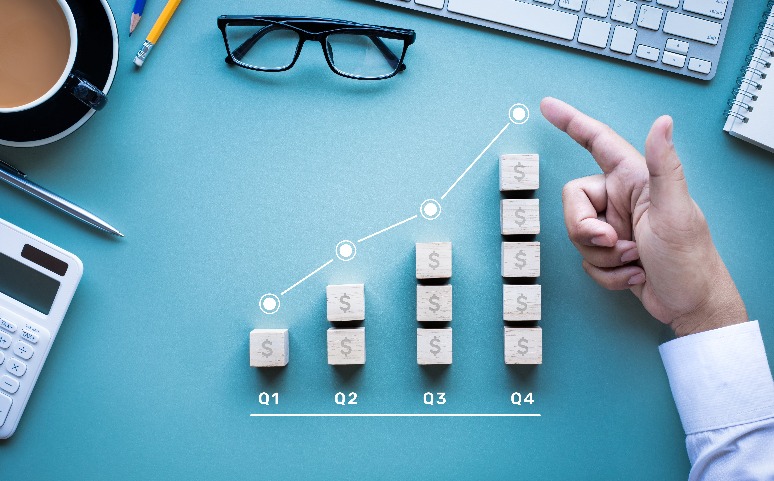November 15, 2021
Will Higher Inflation Lead to Higher Returns?

A lot of you may have noticed that some of your favourite products and services have become more expensive, or even out-of-stock. These are the side effects of central bank monetary policy and COVID-19 shutdowns. When consumer demand and inflation are going up, how can you be sure your investments do too? Let’s look at how current economic factors are influencing markets to find out.
More money, more problems
First off, there is a lot more currency in the world than 18 months ago. Unfortunately, because there’s more of it, it’s also worth less and we need more dollars to buy the same item. In addition, COVID-19 shutdowns have changed labour markets. The types of jobs and skills needed have shifted as technology continues to advance us to a virtual world. Plus, people are choosing different career paths or even opting for early retirement, which has created a job supply issue. So, even though unemployment has fallen as people return to the workforce, the global economy is struggling to fill positions as well as orders at different parts of the supply chain.
Economics 101: Supply and demand
To get a better understanding, let’s look at the global chip shortage—the kind that goes in your electronics and not the tasty snack. A long time ago, the seat in your car was controlled by a lever (mechanical era). This was followed by power seats (electrical) operated with buttons. Now, thanks to technology, these seats require a micro chip that’s connected to the centre console for buttonless operation!
But the recent supply chain shortages have meant many car manufacturers can’t access these chips fast enough, so they cut production. This led to an unusual growth in demand for used cars and, ultimately, their prices. This is just one example of the impact technological advancements and supply chain shortages have had on our economy.
Outpacing inflation
The other major influence concerning investors right now is inflation, more importantly, how to beat it. Long gone are the days of being able to buy GICs from banks, or government and corporate bonds with enough yield to outpace inflation. Statistics Canada reported inflation was at 4.4% in September (year-over-year). This compares to 3-year GIC, government and corporate bond returns at 0.57%, -4.31% and -0.64% for the same period, respectively. Meanwhile, stocks have provided meaningful returns and investors who chose to sit out, missed out.
The importance of diversification
Obviously, stocks also bring volatility, which is never pleasant. That’s why we’ve crafted multi-asset portfolios that balance the need to beat inflation and preserve capital. To accomplish this, the portfolios invest in stocks that are diversified across different countries and sectors. They also take advantage of the low and negative correlations between asset classes by investing in government bonds, corporate bonds and currencies.
Having 100% of your portfolio invested in stocks is very risky. But having some equity exposure provides growth and a different return profile to bonds. For example, when economies perform well, stocks tend to as well, while bonds may lag as interest rates rise.
Where will inflation and the markets go?
While stock prices have jumped in the last 12 months, it’s less concerning as earnings are also rising due to inflation, productivity and high demand. We anticipate this growth cycle will last. As our lifestyles have not yet fully recovered from the pandemic, employment and consumption growth will likely continue for some time, elongating the recovery.
Inflation itself is also likely to remain above trend levels. Wages are growing as companies know they can pass the cost to consumers since supply and demand is largely imbalanced across many sectors. Hence both the costs of production, and of end products and services are rising. Higher oil prices will probably also play a role, but not as influential as in the 70s and 80s since we generally consume less due to efficiency. We expect inflation to moderate in the second half of 2022 and remain closer to 3% and not the 2% that we’re used to. That’s a fair amount of purchasing power to lose if you do not invest properly.
About the Author
Alfred Lam, Senior Vice President, Co-Head of Multi-Asset, joined CI GAM in 2004. He brings over 23 years of industry experience to his portfolio design, asset allocation, portfolio construction, and risk management responsibilities, which include chairing the multi-asset investment management committee and sizing investment bets to drive added value and manage risk. Alfred holds the CFA designation and an MBA from York University Schulich School of Business.
About the Author
Marchello Holditch, CFA, CAIA, Vice-President and Portfolio Manager, oversees CI's multi-manager, multi-asset investment programs. He is responsible for managing CI’s institutional and private client multi-asset portfolios and is a member of the CI Multi-Asset Investment Committee. Previously, Mr. Holditch led CI’s portfolio manager research and oversight function, where he was responsible for evaluating the investment managers of all CI funds. Prior to joining CI, Mr. Holditch worked at a major global consulting firm, where he assisted a wide variety of institutional clients with risk budgeting and asset liability modelling, as well as investment manager research and selection. He holds an Honours Bachelor of Mathematics degree in actuarial science from the University of Waterloo and is a CFA charterholder.
IMPORTANT DISCLAIMERS
This document is provided as a general source of information and should not be considered personal, legal, accounting, tax or investment advice, or construed as an endorsement or recommendation of any entity or security discussed. Every effort has been made to ensure that the material contained in this document is accurate at the time of publication. Market conditions may change which may impact the information contained in this document. Individuals should seek the advice of professionals, as appropriate, regarding any particular investment. Investors should consult their professional advisors prior to implementing any changes to their investment strategies.
The opinions expressed in the communication are solely those of the authors and are not to be used or construed as investment advice or as an endorsement or recommendation of any entity or security discussed.
Certain statements in this document are forward-looking. Forward-looking statements (“FLS”) are statements that are predictive in nature, depend upon or refer to future events or conditions, or that include words such as “may,” “will,” “should,” “could,” “expect,” “anticipate,” “intend,” “plan,” “believe,” or “estimate,” or other similar expressions.
Statements that look forward in time or include anything other than historical information are subject to risks and uncertainties, and actual results, actions or events could differ materially from those set forth in the FLS. FLS are not guarantees of future performance and are by their nature based on numerous assumptions. Although the FLS contained herein are based upon what CI Global Asset Management. and the portfolio manager believe to be reasonable assumptions, neither CI Global Asset Management nor the portfolio manager can assure that actual results will be consistent with these FLS. The reader is cautioned to consider the FLS carefully and not to place undue reliance on FLS. Unless required by applicable law, it is not undertaken, and specifically disclaimed that there is any intention or obligation to update or revise FLS, whether as a result of new information, future events or otherwise.
Certain statements contained in this communication are based in whole or in part on information provided by third parties and CI Global Asset Management has taken reasonable steps to ensure their accuracy. Market conditions may change which may impact the information contained in this document.
CI GAM | Multi-Asset Management is a division of CI Global Asset Management. CI Global Asset Management is a registered business name of CI Investments Inc.
©CI Investments Inc. 2021. All rights reserved.
Published November 15, 2021.

